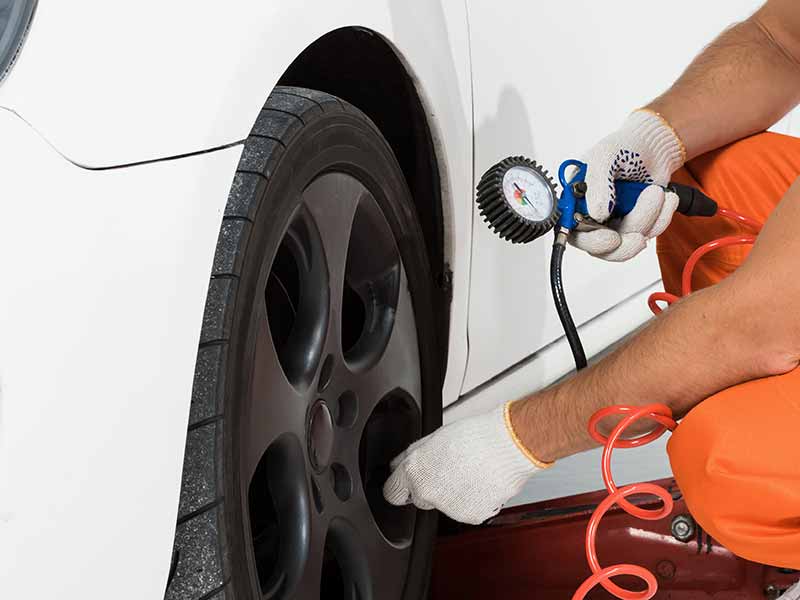Your tire went flat overnight but now holds air, indicating that it may have simply lost some pressure due to normal temperature fluctuations. This is a common occurrence and can be resolved by inflating the tire to the recommended pressure level.
Driving with underinflated tires can lead to reduced fuel efficiency, decreased traction, and increased risk of tire blowouts, so it is essential to regularly check and maintain proper tire pressure. If the flat tire issue persists after inflating it, there may be a puncture or damage that requires professional inspection and repair.
Understanding The Causes Of A Flat Tire
Possible reasons for sudden deflation include tire punctures and leaks, as well as various contributing factors. Punctures can be caused by nails or sharp objects on the road, while leaks can occur due to worn-out valve stems or damaged tire sidewalls.
Factors that contribute to overnight deflation can be temperature changes, as colder air causes tires to lose pressure. Additionally, improper tire maintenance such as insufficient air pressure or overloading the vehicle can also lead to tire deflation. It is important to regularly inspect tires for any signs of damage or leaks and maintain proper air pressure to prevent sudden deflation that can leave you stranded on the road necessitating a repair or replacement.
By understanding these causes, you can take proactive steps to prevent flat tires and ensure a smooth driving experience.

Credit: tiregrades.com
The Science Behind A Self-Sealing Tire
Self-sealing tires are a remarkable innovation in the auto industry. These tires incorporate a sealant that prevents air loss, efficiently dealing with sudden flat tires. The sealant acts as a barrier, sealing any punctures caused by sharp objects. This technology offers several benefits, including enhanced safety due to reduced chances of a tire blowout on the road.
Moreover, it eliminates the hassle of changing a flat tire and the need for carrying a spare. However, it’s important to note that self-sealing tires have their limitations. They can only repair punctures of a certain size and may not be suitable for severe damages.
Nonetheless, the science behind self-sealing tires is fascinating, providing drivers with a convenient solution and added peace of mind on their journeys.
Troubleshooting And Fixing A Tire That Holds Air After Deflation
Troubleshooting and fixing a tire that deflated but holds air afterwards involves assessing its condition meticulously. Start by examining the tire for any signs of minor punctures or leaks, ensuring they are effectively addressed. To temporarily or permanently resolve the issue, consider using tire sealants.
These sealants can serve as quick fixes or long-term solutions, depending on the severity of the problem. By carefully following these steps, you can overcome the annoyance of a flat tire that magically holds air after a sudden deflation.
Frequently Asked Questions For Tire Went Flat Overnight But Now Holds Air
Can A Tire Go Flat Without A Leak?
Yes, a tire can go flat without a leak. It could be due to a puncture, damage to the rim, or a faulty valve.
What Happens If You Leave A Flat Tire Overnight?
Leaving a flat tire overnight can cause further damage and make it more difficult to repair.
Do Tires Lose Pressure Overnight?
Yes, tires can lose pressure overnight due to various factors such as temperature changes and leaks.
Why Did My Tire Go Flat Overnight Cold?
Your tire went flat overnight due to the cold temperature.
Conclusion
After experiencing the frustration of waking up to a flat tire, you may be relieved to discover that the tire now holds air. While the overnight deflation may have caused initial concern, it is not uncommon for changes in temperature or small punctures to result in temporary air loss.
By examining the tire thoroughly and ensuring it is properly inflated, you can avoid future inconvenience and potential damage to your vehicle. Regular tire maintenance, including regular inspections, pressure checks, and tire rotation, is essential for optimal performance and safety.
It is also important to monitor your tires for any signs of wear and tear, as well as addressing any issues promptly. By staying on top of tire care, you can help extend their lifespan and enjoy a smooth and efficient driving experience.